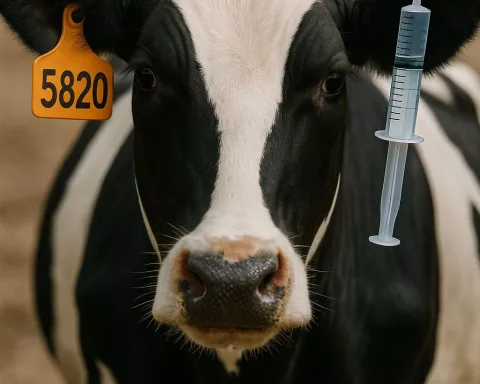Electric bicycles, or E-Bikes, are becoming super popular in South Africa, but new rules are coming to make riding them safer. Starting December 2, 2024, some E-Bikes will be treated like cars, meaning they need to be registered, licensed, and the riders must have a driver’s license. This change aims to protect pedestrians from the fast and quiet bikes zooming around. With more people using E-Bikes for commuting and tours, it’s important that everyone knows the new rules and that cities have the right bike lanes and signs to keep everyone safe. The future of E-Bikes looks bright, but it will require good planning and awareness to make it work!
What are the new regulations for electric bicycles in South Africa?
Starting December 2, 2024, certain electric bicycles in South Africa will be classified as motor vehicles. This means they must be registered and licensed, and riders need a valid driver’s license. These regulations aim to enhance safety as E-Bikes grow in popularity.
A Changing Landscape for E-Bikes
The increasing popularity of electric bicycles in South Africa has instigated a notable shift in regulations, primarily fueled by public safety concerns. In a significant move, lawmakers have updated the National Road Traffic Act to classify certain electric bikes as motor vehicles. This reclassification introduces a host of legal requirements for both riders and manufacturers, fundamentally altering the landscape for E-Bike enthusiasts. According to TopAuto, these changes mandate that E-Bikes undergo registration and licensing to be legally operated, while riders are now required to have a valid driver’s license.
This regulatory overhaul represents a profound transformation in the governance of electric pedal-assisted bicycles under South African law. The electric motors integrated into these bikes, available in various sizes and output levels, assist with pedaling and enable rapid acceleration. Frequent visitors to local areas such as pavements, parks, or nature trails have likely noticed a surge in E-Bike usage, signaling their growing presence in everyday life.
The allure of E-Bikes is evident. They provide an efficient and eco-friendly alternative to conventional transportation methods. However, their ability to attain higher speeds compared to traditional bicycles has raised significant safety concerns. An article on the subject highlights that “their speed and silence pose a danger to other pedestrians, whether the riders would like to admit it or not,” underscoring the urgent need for regulatory measures.
New Regulations and Their Implications
The revised regulation, set to take effect on December 2, 2024, specifically targets electric pedal bicycles capable of exceeding 45 km/h. Experts note that while power output and battery size vary among different models, most electric bicycles can surpass this speed threshold under optimal conditions. This development is particularly relevant as E-Bikes transition from recreational gadgets to genuine modes of transportation, with an increasing number of South Africans adopting them for daily commuting.
Although not every E-Bike on the market can exceed 45 km/h, nearly all offer significantly quicker acceleration compared to traditional bicycles. This characteristic has become a central point in the regulatory shift. Despite the legislative update, there remains uncertainty around enforcement and practical application. Authorities have reportedly sought guidance from Minister of Transport Barbara Creecy on implementing the new law regarding E-Bikes in South Africa.
Adding to the complexity is a general lack of public awareness. Many riders are uninformed about the change in classification, and law enforcement appears similarly unprepared to manage this new category of fast, silent vehicles on roads and sidewalks. The article points out that “the most common transgressions related to cyclists are entering roadways unsafely and riding on sidewalks among pedestrians,” highlighting the need for better education and enforcement.
E-Bikes in Urban and Rural Settings
The rise of E-Bikes is not limited to urban areas. Guided electric bicycle tours have become a popular feature at wine farms, eco-estates, and game reserves, offering a quiet, low-impact way to explore nature. While appealing to a broad audience, these tours also pose potential hazards to unsuspecting pedestrians, further emphasizing the need for comprehensive regulations.
As E-Bikes become increasingly integrated into tourism and urban commuting, authorities face the challenge of balancing innovation and accessibility with safety and rule enforcement. Whether the recent law change will lead to smoother regulation or more confusion remains to be seen. The ultimate impact of these regulatory adjustments will depend on how effectively they are implemented and enforced.
From a global perspective, the evolution of E-Bike regulation in South Africa mirrors a broader trend. Countries worldwide are grappling with how to incorporate these agile, eco-friendly machines into existing transportation systems. European cities like Amsterdam and Copenhagen, which have long embraced cycling as a primary mode of transport, provide valuable insights into the potential benefits and challenges of widespread E-Bike usage.
Broader Implications and Future Considerations
Historically, the advent of new transportation technologies has necessitated regulatory adjustments. The introduction of automobiles in the early 20th century transformed urban landscapes and required new laws to address safety and infrastructure. Similarly, the rise of electric bicycles presents both opportunities and challenges for modern cities.
E-Bikes offer a sustainable alternative to cars, particularly for short-distance travel. They help reduce traffic congestion, lower emissions, and promote a healthier lifestyle. However, their rapid acceleration and relatively high speeds require careful regulation to ensure public safety.
The integration of E-Bikes into South Africa’s transportation system also has significant economic implications. The burgeoning E-Bike industry promises job creation and technological innovation. Local manufacturers and retailers stand to benefit from increased demand, provided they navigate the new regulatory landscape effectively.
Furthermore, E-Bikes have the potential to enhance urban mobility, especially in densely populated areas. They offer a practical solution for last-mile connectivity, bridging the gap between public transportation hubs and final destinations. This can alleviate the strain on public transit systems and reduce the reliance on personal vehicles.
From a design perspective, E-Bikes embody the fusion of form and function. Designers strive to create visually appealing models that blend seamlessly into urban environments. This trend reflects a broader movement in industrial design, where functionality must harmonize with aesthetic considerations.
Moving Forward: Lessons and Strategies
As South Africa adapts to these new regulations, it can draw lessons from other countries that have successfully integrated E-Bikes into their transportation systems. Engaging with international experts and adopting best practices will be crucial in navigating the complexities of this transition.
The legislative changes concerning E-Bikes also highlight the importance of public awareness and education. Both riders and pedestrians must understand the new rules and their implications for safety. Public campaigns and community outreach can play a vital role in disseminating this information.
Urban planners and policymakers must also consider infrastructure adaptations to accommodate E-Bikes. Dedicated bike lanes, clear signage, and traffic calming measures can enhance safety and encourage responsible riding behavior. These efforts align with broader goals of sustainable urban development and smart city initiatives.
In conclusion, the growing popularity of E-Bikes in South Africa marks a pivotal moment in the country’s transportation landscape. The recent regulatory changes reflect a proactive approach to addressing safety concerns while embracing technological innovation. As E-Bikes continue to gain traction, balancing regulation, public awareness, and infrastructure development will be key to harnessing their full potential.
“`markdown
FAQ: Electric Bicycles Regulations in South Africa
What are the new regulations for electric bicycles in South Africa?
Starting December 2, 2024, certain electric bicycles in South Africa will be classified as motor vehicles. This means they must be registered and licensed, and riders need a valid driver’s license. These regulations are aimed at enhancing safety as E-Bikes become increasingly popular.
Which types of electric bicycles will be affected by these regulations?
The regulations specifically target electric pedal bicycles capable of exceeding 45 km/h. While not all E-Bikes on the market can reach this speed, most models can achieve higher acceleration compared to traditional bicycles, prompting the need for regulation.
Why are these regulations being implemented?
The surge in E-Bike usage has raised public safety concerns, particularly regarding their speed and quiet operation, which can pose hazards to pedestrians. By classifying certain E-Bikes as motor vehicles, the regulations aim to ensure safety through registration, licensing, and requiring riders to possess a driver’s license.
How will the enforcement of these new regulations be managed?
While the new regulations will take effect on December 2, 2024, there is currently uncertainty surrounding their enforcement. Authorities are reportedly seeking guidance on how to manage this new category of vehicles, and public awareness campaigns will likely be necessary to educate both riders and pedestrians about the new rules.
What are the implications for E-Bike manufacturers and retailers?
The new regulations represent both challenges and opportunities for E-Bike manufacturers and retailers. They will need to navigate the regulatory landscape effectively to meet registration and licensing requirements. However, the growing demand for E-Bikes could lead to job creation and innovation within the industry.
How can cities prepare for the increase in E-Bike usage and ensure safety?
Cities should consider adaptations to their infrastructure to accommodate E-Bikes, such as dedicated bike lanes, clear signage, and traffic calming measures. Public campaigns focused on education and awareness can help inform both riders and pedestrians, fostering safer interactions as E-Bikes become more integrated into everyday transportation.
“`












